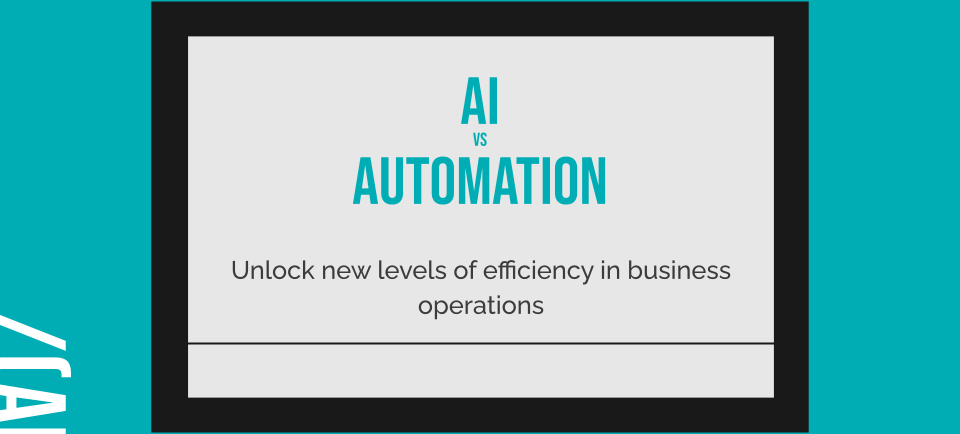AI vs Autoumation
Are often used interchangeably. However, while they both enhance efficiency and productivity, they serve different purposes and operate in distinct ways.


AI vs. Automation:
Understanding the Difference and Maximizing Potential
In today’s digital world, the terms AI (Artificial Intelligence) and Automation are often used interchangeably. However, while they both enhance efficiency and productivity, they serve different purposes and operate in distinct ways. Understanding their differences, and how they can be combined, can unlock new levels of efficiency in business operations.
What Is AI?
Whenever we hear the word AI, we often think of tools like ChatGPT, MidJourney, or AI-powered content generation platforms. These tools take an input from the user, such as a prompt or a question then generate an output, whether it’s a document, an image, or an answer to a query.
AI-driven tools are powerful because they can enhance productivity by 3x to 5x, but they require continuous human interaction. For example, when using ChatGPT to write an email, the user needs to:
Provide an initial prompt
Review the response
Refine the output with follow-up prompts
Edit and finalize the result
This back-and-forth process allows AI to assist, but the user still plays a central role in guiding it. AI excels at pattern recognition, content generation, and decision-making based on data, but it depends on human input to refine its results.
What Is Automation?
Automation, on the other hand, is a different game entirely. Unlike AI, automation does not require constant human interaction. It follows predefined workflows and executes multiple steps automatically, triggered by a specific event.
For example, consider an email automation system:
A trigger (e.g., customer completing a purchase) initiates an automated sequence.
The system sends a thank-you email.
After a set period, it follows up with a feedback survey.
If no response is received, another email can be scheduled.
This process runs without human intervention. The key difference is that automation is not inherently intelligent, it simply follows a set of predefined rules. While it eliminates the need for manual execution, it lacks the flexibility and adaptability of AI.
Combining AI and Automation:
The Best of Both Worlds
Now, imagine a scenario where we merge AI with automation to create a seamless, intelligent workflow. Here’s an example:
Automating Customer Feedback with AI Integration
Trigger: A customer completes a service.
Automation Sends Survey: An automated system emails a feedback form.
AI Reads Responses: Instead of a generic “Thank you for your feedback,” AI analyzes the response to personalize the follow-up message.
Smart Customization:
If the customer praises fast service, AI might generate:
"Thank you for your response! We’re glad you appreciated our quick turnaround time. We look forward to serving you again!"If there’s a negative comment, AI flags it as critical, notifies the appropriate team member, and pauses the automated response to ensure a human review.
Automation Executes: Once AI generates a response, automation takes over, ensuring timely delivery without further human involvement.
By combining AI’s ability to analyze and personalize with automation’s efficiency in execution, businesses can scale customer interactions without losing the personal touch.
Final Thoughts
AI and automation are each powerful on their own, but when used together, they elevate efficiency, intelligence, and customer experience to new levels. AI makes processes smarter, while automation ensures they run smoothly without manual intervention. Businesses that embrace both will not only save time but also create deeper engagement with their customers, all while improving operational workflows.
Would you like to implement AI and automation in your business? At PIA Solutions, we specialize in process improvement, automation, and AI-powered solutions tailored to your needs. Let’s talk about how we can optimize your workflows and drive efficiency to the next level.
